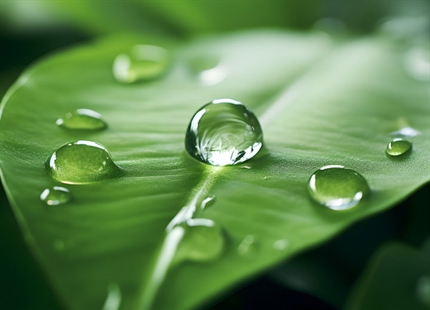
Author: David Gates, Area Sales Manager, Condair plc
Humidification of museums, art galleries & works of art
Picture frames shrinking, textiles becoming brittle, paint on canvas flaking and furniture joints loosening are all symptoms of a dry atmosphere. These effects aren’t desirable in a regular domestic situation but when they occur in a museum or art gallery the results can be drastic and very expensive to put right.
Works of art are made from a wide range of substances and are often organic, e.g. wood, cotton, paper, bone, ivory, leather and parchment. All of these materials are hygroscopic – that is they are affected by the moisture content in the surrounding air. If the environment they are situated in is dry they will lose moisture to the atmosphere. If it is too damp they will gain moisture.
This change can cause materials to swell or contract with resulting damage. In order to preserve a work of art in its original state, it should be kept in an environment that has stable, optimum humidity. This will maintain a balanced equilibrium between the exhibit and the atmosphere, preventing any moisture loss or gain and avoiding costly repairs.
However, humidity levels in museums and art galleries are notoriously difficult to maintain consistently. The constant influx of people through a room will cause the temperature and humidity to fluctuate. One minute a room may be full of visitors and the next it is empty.
Temperature and humidity are inextricably linked. If the temperature increases in a room, the humidity level will drop if water is not artificially added. This is due to the fact that cold air holds less water than warm air. Heat an atmosphere that has 55% humidity and the humidity level will decrease until the atmosphere can draw enough water from other sources to achieve its natural level at its warmer temperature.
This means that dry air is largely a seasonal problem. As heating systems are turned on, indoor humidity levels drop. However, in a museum environment even minor fluctuations in humidity, such as when lights are turned on or off in a display cabinet, can cause damage over time.

Different materials are affected by moisture loss in different ways...
Effects of low humidity
Changes in the moisture content of an exhibit may have very visible effects such as materials splitting or cracking. These effects may be microscopic to start off with but over time will become more obvious. As things become older they will become more brittle and fragile, and less able to readjust their internal moisture level without breaking.
Different materials are affected by moisture loss in different ways. Woods are affected depending on how they were primarily seasoned. Older woods that were not dried using modern kiln techniques will have a moisture content of around 12-15%. Storing furniture or sculptures made of this type of wood in a centrally heated environment may lead to cracking and movement of joints, with more severe damage being suffered by veneered surfaces. Warping can occur when external layers lose moisture whilst internal layers do not. Marquetry, metal inlays, gesso, paint, and oriental, European or Japanese lacquer can also detach or become loose.
Paintings are made up of several layers. These layers will react to moisture loss in different ways and move accordingly. This can cause them to separate resulting in blistering and flaking of the paint layer. Canvas is often considered to be less susceptible to changes in humidity, as it can adapt well to fluctuations over time. However, canvas does respond quickly to changes in humidity level so although long term differences won’t effect it drastically, rapid changes will cause constant fluctuation and may result in damage to the material or paint layer.

Paper and papyrus will become brittle and difficult to handle if they dry out...
Large panel paintings are often made up of more than one panel. If these panels move apart through warping, paint may crack or flake off.
Paper and papyrus will become brittle and difficult to handle if they dry out. Although this effect is reversible by leaving them in a moist surrounding, alternate drying and damping cycles are not good for the paper structure and can cause damage.
Ivory is also hygroscopic and behaves in a very similar fashion to wood. Thin elements of an ivory structure are extremely susceptible to changes in humidity and even a draught from a window may be enough to cause them to crack.
Textiles are more likely to be damaged when handled if they are below their natural moisture level. Silk is particularly at risk as are exhibits that contain hair. Often these materials are stretched across wooden boards or frames, where the fibres can become brittle or broken if their movement is restricted.
Pottery, terracotta and stone will have their internal mineral content altered in moist or dry conditions. Salts that are in the substance will rise to the surface when wet and then crystallize when dry. This can lead to stains on the surface, powdering and flaking.
How to humidify
In many galleries the exhibits are displayed on the walls, therefore it is the conditions at the wall surface rather than in the centre of the gallery that is more important. However in other galleries the exhibits are stored in sealed display cases and it is these that need to be controlled, yet in both instances the environment has to be maintained to ensure visitor comfort. Each gallery has its own unique requirements so general specifications, designs and poor selection of critical plant items is often the cause of problems.

...the stability of the humidity control is far more important that the precise level.
When designing a humidification system, the stability of the humidity control is far more important than the precise level. The most frequent design condition is a relative humidity of between 45-55%RH with daily fluctuations held to +/-5%RH.
Ventilation is essential for libraries, since it ensures the health of staff and visitors as well as minimizing the potential for mould growth. However increased ventilation will increase the demand for humidification particularly in winter and with paper being a highly hygroscopic material the stability of the humidity is critical. This can only be achieved by selecting the right humidifier for the application.
As mentioned previously, the main problem for museums is stability. The internal environment of a museum or gallery is subject to almost constant change in temperature and humidity during all the hours that visitors are going through its doors. Therefore any humidification system installed must be able to react quickly to a drop in humidity, shut down rapidly when the humidity level is increased and modulate from 0-100% operation to cope with the close control required.
Museums need to control the environment around the exhibits 24 hours a day, seven days a week. Constant operation of the humidification system ensures good environmental control and eliminates sharp spikes and excess fluctuations of temperature and relative humidity. For this reason humidifiers need to be reliable and also not too expensive to run. Maintenance is also an issue as the units will need to be maintained frequently due to the long operating hours. Anything that is costly to maintain will quickly become very expensive.
Museums and galleries are often housed in old buildings that don’t have built-in duct-work networks for pumping round conditioned air. In modern office buildings humidity is introduced into the atmosphere through these ducts but without them humidity has to be introduced directly into the room that requires the humidity control.
Humidity can be introduced into an atmosphere in three basic ways: spraying a fine mist, releasing steam or evaporation from a wetted media.
The most popular solution for humidifying museums and art galleries is steam humidification. Where consistent control, reliability and low maintenance is required, resistive steam is the most appropriate choice.

Where there's no facility to install or operate a fixed humidifier, mobile evaporative humidifiers are often used...
Another advantage of using this type of unit is that many old buildings do not have central steam generating plant. This type of unit enables steam to be generated locally and released directly into the room that requires it or into an air conditioning duct if the building is so equipped.
Where there’s no facility to install or operate a fixed humidifier, mobile evaporative humidifiers are often used, which also give the flexibility to move the humidifier into more sensitive areas, as required. These typically incorporate a humidity controller (also called a humidistat or hygrostat) to give the required level of control.
Experience
It’s not only important to be sure that your humidifier supplier is able to offer a full range of humidifiers but also that they provide a full after-sales support service. All humidifiers need regular maintenance to keep them running effectively and to ensure hygienic operation.
Condair fulfils both these requirements, and has a great deal of humidification experience in museums, archives and art galleries:
- Windsor Castle
- The Tate Galleries
- The British Museum
- The Royal Academy of Arts
- The National Portrait Gallery
- The Houses of Parliament
- The National Maritime Museum
- The Public Records Office in Kew
- The Museum of Science & Industry
- The Space Science Museum
Condair humidification systems are also used in many smaller galleries, museums, private collections, stately homes and other heritage-related sites throughout the UK and Europe.
So, if humidity control is an important issue for you, you can be confident in the service offered by Condair. For free expert advice and an informed discussion of your humidity control requirements, click here and submit the form and we’ll be in touch.
















